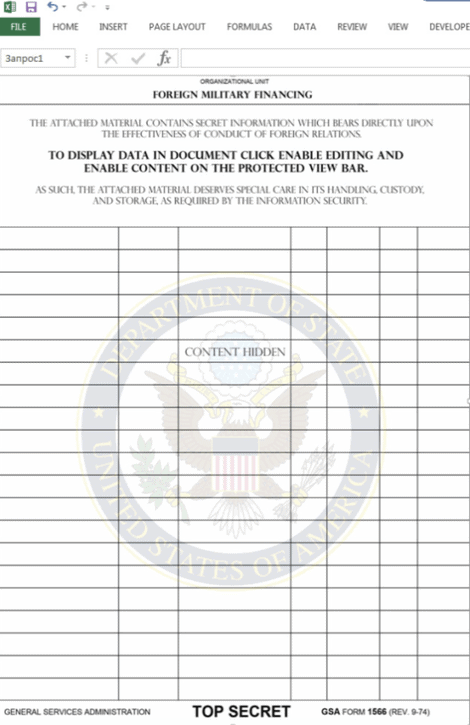A new targeted attack was detected through TeamViewer, which aimed at stealing financial information from government and economic targets across Europe and beyond.
Check Point researchers announced on Monday that the attacks targeted government and financial officials, as well as representatives of various embassies in Europe, Nepal, Kenya, Liberia, Lebanon, Guyana and Bermuda.
The attack started with a standard electronic message phishing which contained a malicious attachment claiming to be a “top secret” document from the United States.
The subject line said “Military Financing Program” and the .XLSM document had it logo of the US State Department.

So if someone opened the document and activated the macros, two files came out - a regular AutoHotkeyU32.exe program and a malicious TeamViewer DLL.
The AutoHotkeyU32 program was used to send a POST request to the server orders and control (C&C) of the attacker, but also downloaded more malicious scripts that were capable of taking screenshots of the target computer, stealing information and then sending it to the attacker.
TeamViewer is often used by businesses for remote PC access. However, due to its capabilities, the software is also used by scammers to gain access to remote systems.
The malicious variant with TeamViewer DLL provided attackers with modified functionality, and hid any connection to TeamViewer. So the victims did not know that someone was connected to their computer.
The main targets of the specific attack as we mentioned above were public financial sector bodies and according to them researchers the would-be hacker was Russian.
_________________
- GR and EL domains: Attack to the Greek Internet Name Registry
- Windows 10 Fall Creators support fee immediately upgrade
- Mathesis: Ancient Greek Technology 1 (Basic Technologies)
- Edge with Chromium allows video streaming on 4K
- Mark Zuckerberg: help from regulators & governments





